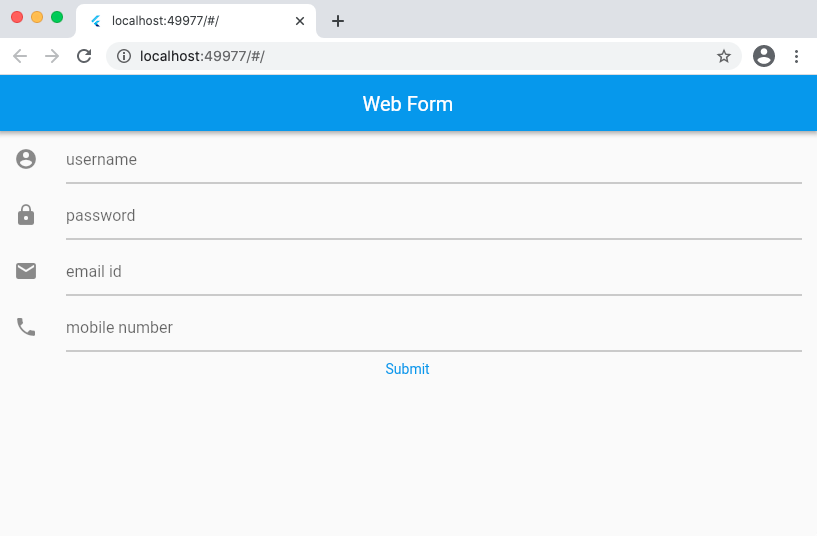

#FLUTTER FORM DESIGN INSTALL#
No specific setup required: only install the dependency and use :) Basic use # final _formKey = GlobalKey() The rest of the attributes will be determined by the type of Widget being used. transform TextField value for numeric field from String to num This event function will fire immediately the the field value changesįunction that transforms field value before saving to form value. This will form the key in the form value Mapĭetermines whether the field widget will accept user input.ĭefines the border, labels, icons, and styles used to decorate the field.Ī FormFieldValidator that will check the validity of value in the FormField In order to create an input field in the form, along with the label, and any applicable validation, there are several attributes that are supported by all types of inputs namely: Attribute FormBuilderTextField - A Material Design text field input.FormBuilderSwitch - On/Off switch field.FormBuilderSlider - For selection of a numerical value on a slider.FormBuilderRangeSlider - Used to select a range from a range of values.FormBuilderRadioGroup - Used to select one value from a list of Radio Widgets.FormBuilderFilterChip - Creates a chip that acts like a checkbox.FormBuilderDropdown - Used to select one value from a list as a Dropdown.FormBuilderDateTimePicker - For Date, Time and DateTime input.FormBuilderDateRangePicker - For selection of a range of dates.FormBuilderChoiceChip - Creates a chip that acts like a radio button.FormBuilderCheckboxGroup - List of checkboxes for multiple selection.FormBuilderCheckbox - Single checkbox field.React to form fields changes and validations.Create a form with several type of inputs.Implement reset, clear or other button into field.This gives you a convenient way of adding common ready-made input fields instead of creating your own FormBuilderField from scratch. import 'package:flutter/material.This package helps in creation of data collection forms in Flutter by removing the boilerplate needed to build a form, validate fields, react to changes and collect final user input.Īlso included are common ready-made form input fields for FormBuilder. We'll start off with an empty stateless widget that takes in all of the properties that we'll need to customise the layout. Inside create a new file called authentication_layout.dart. In the UI folder create a new folder called dumb_widgets. We'll start by creating the shared widget that we'll need in both views. The Styling of the FormFields (own tutorial).The "Already have an account" hyperlink text.When we submit we send the data to the FirebaseAuthenticationService depending on the result we either navigate to a success route or we set the validation message if there's an error. ViewModel break downĮach of the views will have the exact same functionality. We'll make a widget called AuthenticationLayout which cakes in the properties mentioned above. The only part that's different is the forms section, so we'll build it that way. This is followed by two different forms, followed by the same matching UI again.

We'll see that both have a Title and a SubTitle.

Lets look over the UI similarities first. These views look and function the same so a lot of the functionality can be shared.
#FLUTTER FORM DESIGN CODE#
They look quite similar so we'll make sure our code reflects that as well. UI DesignĪbove we can see the two views that we'll be building. We'll start off with some basic planning to give our selves a goal to hit as well as a guide to follow when implementing. This is apart of our open source product building series. We'll be using this project to write the code in. Welcome back! In this tutorial we'll be building the Login and Create Account Views for the Box't Out customer project.


 0 kommentar(er)
0 kommentar(er)
